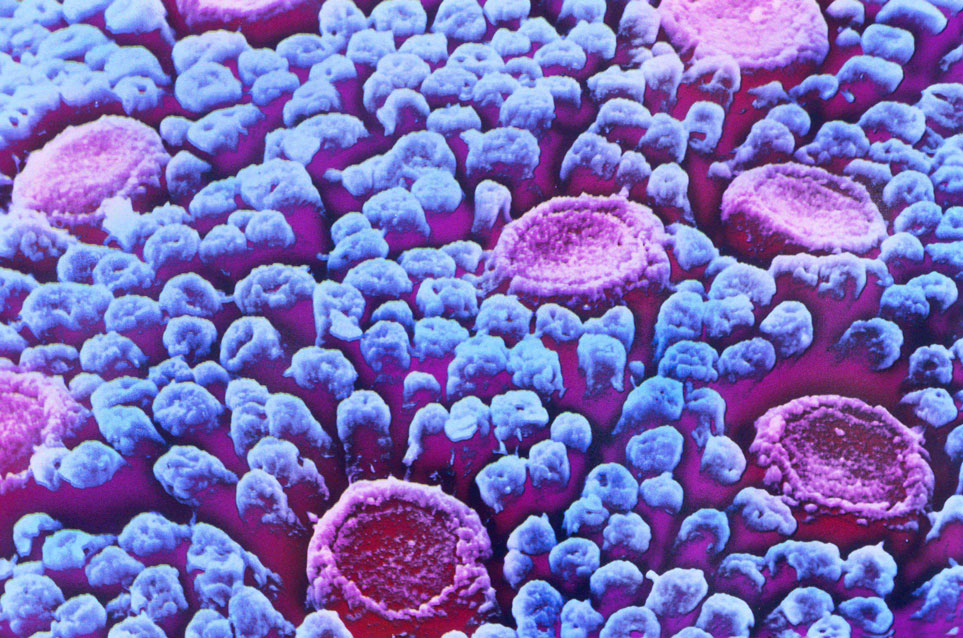Chapter 50. Taste Sensations
Learning Objectives

Identify the sensory receptors for taste.
Describe the five main taste sensations.
Review
Review
Select the NEXT button to continue with the Review.

1. How do we taste the food we eat? Chemical molecules in the food stimulate sensory receptors on our tongue and other areas of the mouth.
Review
Review
Select the NEXT button to continue with the Review.


2. Scattered across the tongue are thousands of small and large bumps called papillae. The large papillae contain structures called taste buds. Ironically, the taste buds don’t taste anything. Instead, the 50 to 100 taste receptor cells inside each taste bud are stimulated by the chemicals in food, and they send messages to the brain. If these cells are damaged by hot foods, they regenerate in about two weeks.
Review
Review
Select the NEXT button to continue with the Review.

3. Humans have five different types of taste receptor cells that sense five basic tastes: the familiar tastes of sweet, sour, salty, and bitter, plus a meaty taste called umami (sometimes called savory). All other flavors are combinations of these five basic tastes.
Review
Review
Select the NEXT button to continue with the Review.

4. In the past, people believed that the special receptors for each taste sensation were located in a particular region of the tongue, as shown in this outdated "taste map." But recent research has shown that sensitivity to all five basic tastes is spread across the entire tongue.
Practice: Detecting and Identifying Flavors
Practice: Detecting and Identifying Flavors
Select the PLAY button to watch the sense of taste in action.
- Chapters
- descriptions off, selected
- captions settings, opens captions settings dialog
- captions off, selected
- English Captions
This is a modal window.
Beginning of dialog window. Escape will cancel and close the window.
End of dialog window.
This is a modal window. This modal can be closed by pressing the Escape key or activating the close button.
This is a modal window.
The animation starts with a woman licking an ice cream cone. We then zoom in on the woman's tongue and can see the papillae or small bumps on the surface of the tongue. A cross-section of the tongue is enlarged to show the different papillae on the tongue. The smaller papillae help us feel the texture of food. The larger papillae contain the taste receptors. The large papillae have deep vertical groves that allow food molecules to reach the taste buds. The taste buds are stacked horizontally inside the groves. When food molecules stimulate the tiny hairs on the outside of the taste pore, the taste receptor cells inside the taste bud are activated. The message is then sent to the brain via the sensory neuron.
Quiz 1
Quiz 1
Answer the question. Then, select the CHECK ANSWER button.

Quiz 2
Quiz 2
Drag these illustrations into the correct order by size, from the smallest structure to the largest structure. When all the illustrations have been placed, select the CHECK ANSWER button.
 Taste bud
Taste bud
 Papilla
Papilla
 Taste receptor cell
Taste receptor cell
Conclusion
